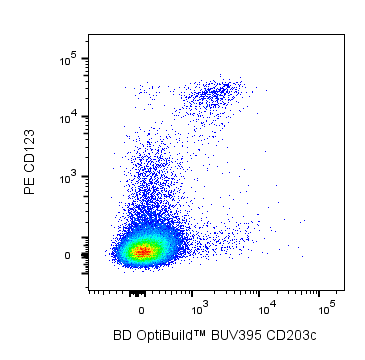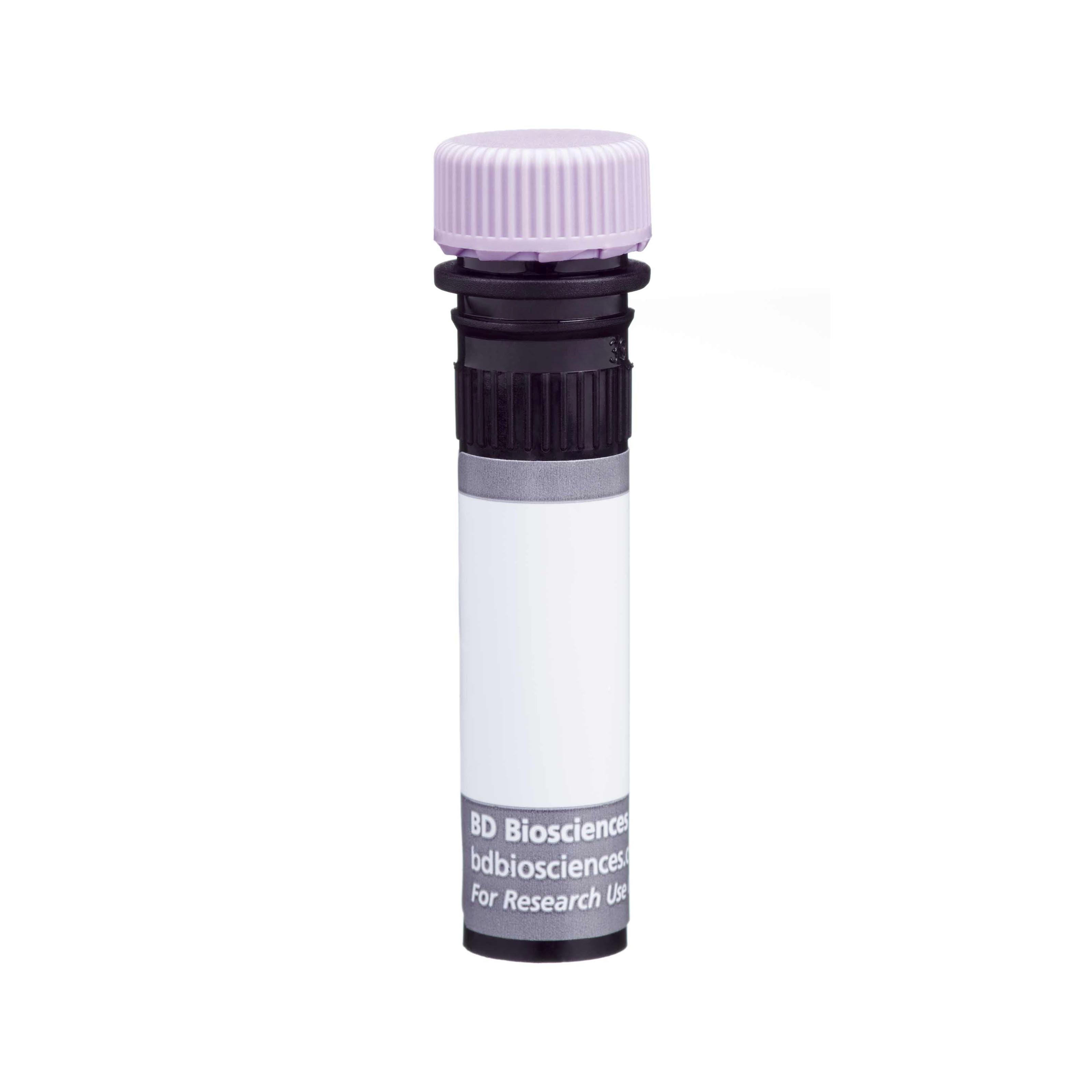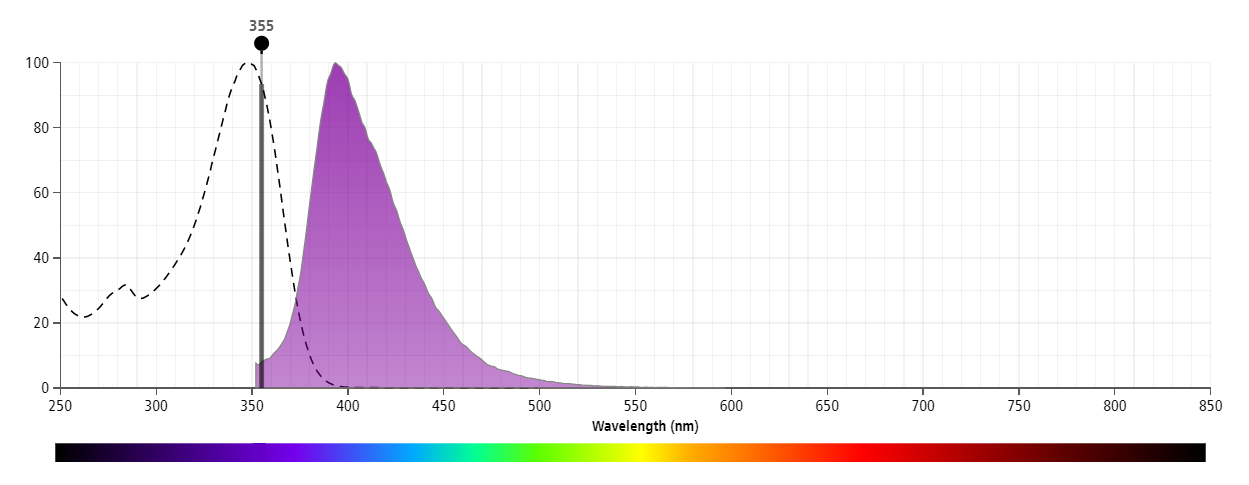Old Browser
This page has been recently translated and is available in French now.
Looks like you're visiting us from {countryName}.
Would you like to stay on the current country site or be switched to your country?




Multiparameter flow cytometric analysis using BD OptiBuild™ BUV395 Mouse Anti-Human CD203c antibody (Cat. No. 744245) on human peripheral cells. Flow cytometry was performed using a BD LSRFortessa™ Flow Cytometer System.


BD OptiBuild™ BUV395 Mouse Anti-Human CD203c

Regulatory Status Legend
Any use of products other than the permitted use without the express written authorization of Becton, Dickinson and Company is strictly prohibited.
Preparation And Storage
Recommended Assay Procedures
For optimal and reproducible results, BD Horizon Brilliant Stain Buffer should be used anytime two or more BD Horizon Brilliant dyes (including BD OptiBuild Brilliant reagents) are used in the same experiment. Fluorescent dye interactions may cause staining artifacts which may affect data interpretation. The BD Horizon Brilliant Stain Buffer was designed to minimize these interactions. More information can be found in the Technical Data Sheet of the BD Horizon Brilliant Stain Buffer (Cat. No. 563794).
Product Notices
- This antibody was developed for use in flow cytometry.
- The production process underwent stringent testing and validation to assure that it generates a high-quality conjugate with consistent performance and specific binding activity. However, verification testing has not been performed on all conjugate lots.
- Researchers should determine the optimal concentration of this reagent for their individual applications.
- An isotype control should be used at the same concentration as the antibody of interest.
- Caution: Sodium azide yields highly toxic hydrazoic acid under acidic conditions. Dilute azide compounds in running water before discarding to avoid accumulation of potentially explosive deposits in plumbing.
- For fluorochrome spectra and suitable instrument settings, please refer to our Multicolor Flow Cytometry web page at www.bdbiosciences.com/colors.
- Please refer to www.bdbiosciences.com/us/s/resources for technical protocols.
- BD Horizon Brilliant Stain Buffer is covered by one or more of the following US patents: 8,110,673; 8,158,444; 8,575,303; 8,354,239.
- BD Horizon Brilliant Ultraviolet 395 is covered by one or more of the following US patents: 8,158,444; 8,575,303; 8,354,239.
Companion Products






The NP4D6 monoclonal antibody specifically binds to CD203c. CD203c is a type II transmembrane glycoprotein that is a member of the E-NNP family of ectoenzymes. CD203c is also known as ectonucleotide pyrophosphatase/phosphodiesterase 3 (E-NPP3, ENPP3) due to its capacity to hydrolyze phosphodiester and phosphosulfate bonds in a variety of molecules including deoxynucleotides, nucleoside phosphates, and nicotinamide adenine dinucleotide. CD203c is otherwise known as Phosphodiesterase-1β (PD-1β, PD-I beta), B10, or gp130RB13-6. CD203c is expressed by basophils and mast cells. Basophils increase CD203c expression following activation with allergens or antibodies that crosslink cytophilic IgE. Thus, CD203c serves as a useful flow cytometric marker for basophil activation and the detection and analysis of type 1 allergic responses. IgE-receptor cross-linking results in CD203c upregulation and overexpression on neoplastic mast cells in cases of systemic mastocytosis.
The antibody was conjugated to BD Horizon™ BUV395 which is part of the BD Horizon Brilliant™ Ultraviolet family of dyes. This dye has been exclusively developed by BD Biosciences to have minimal spillover into other detectors, making it an optimal choice for multicolor flow cytometry. With an Ex Max at 348 nm and an Em Max at 395 nm, BD Horizon BUV395 can be excited with a 355 nm laser and detected with a 379/28 filter.

Development References (8)
-
Binder M, Fierlbeck G, King T, Valent P, Buhring HJ. Individual hymenoptera venom compounds induce upregulation of the basophil activation marker ectonucleotide pyrophosphatase/phosphodiesterase 3 (CD203c) in sensitized patients. Int Arch Allergy Immunol. 2002; 129(2):160-168. (Clone-specific: Flow cytometry). View Reference
-
Buhring HJ, Streble A, Valent P. The basophil-specific ectoenzyme E-NPP3 (CD203c) as a marker for cell activation and allergy diagnosis. Int Arch Allergy Immunol. 2004; 133(4):317-329. (Clone-specific: Flow cytometry). View Reference
-
Fureder W, Schernthaner GH, Ghannadan M, et al. Quantitative, phenotypic, and functional evaluation of basophils in myelodysplastic syndromes. Eur J Clin Invest. 2001; 31(10):894-901. (Biology). View Reference
-
Ghannadan M, Hauswirth AW, Schernthaner GH, et al. Detection of novel CD antigens on the surface of human mast cells and basophils. Int Arch Allergy Immunol. 2002; 127(4):299-307. (Clone-specific: Immunofluorescence). View Reference
-
Hauswirth AW, Natter S, Ghannadan M, et al. Recombinant allergens promote expression of CD203c on basophils in sensitized individuals. J Allergy Clin Immunol. 2002; 110(1):102-109. (Clone-specific: Flow cytometry). View Reference
-
Hauswirth AW, Sonneck K, Florian S, et al. Interleukin-3 promotes the expression of E-NPP3/CD203C on human blood basophils in healthy subjects and in patients with birch pollen allergy. Int J Immunopathol Pharmacol. 2007; 20(2):267-278. (Biology). View Reference
-
Hennersdorf F, Florian S, Jakob A, et al.. Identification of CD13, CD107a, and CD164 as novel basophil-activation markers and dissection of two response patterns in time kinetics of IgE-dependent upregulation. Cell Res. 2005; 15(5):325-335. (Biology). View Reference
-
Iwamoto T, Yuta A, Tabata T, et al. Evaluation of basophil CD203c as a predictor of carboplatin-related hypersensitivity reaction in patients with gynecologic cancer. Biol Pharm Bull. 2012; 35(9):1487-1495. (Biology). View Reference
Please refer to Support Documents for Quality Certificates
Global - Refer to manufacturer's instructions for use and related User Manuals and Technical data sheets before using this products as described
Comparisons, where applicable, are made against older BD Technology, manual methods or are general performance claims. Comparisons are not made against non-BD technologies, unless otherwise noted.
For Research Use Only. Not for use in diagnostic or therapeutic procedures.
Report a Site Issue
This form is intended to help us improve our website experience. For other support, please visit our Contact Us page.